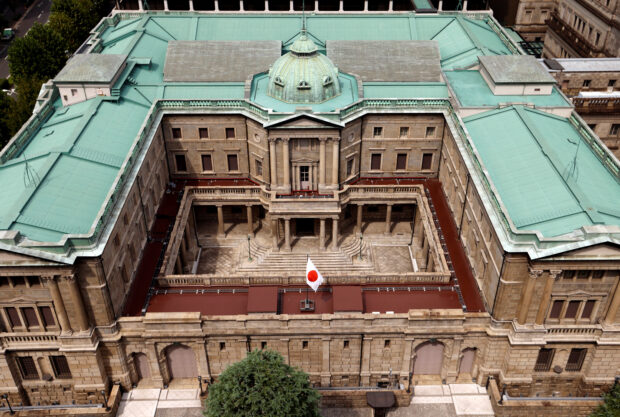
TOKYO -The Bank of Japan maintained ultra-low interest rates on Friday and its pledge to keep supporting the economy until inflation sustainably hits its 2 -percent target, suggesting it was in no rush to phase out its massive stimulus program.
Markets are closely monitoring commentary from Governor Kazuo Ueda’s for clues on how soon the bank could phase out the massive stimulus program of his predecessor, as the U.S. central bank and others signal they may keep borrowing costs higher for longer to curb price pressures.
As widely expected, the BOJ maintained its short-term interest rate target of -0.1 percent and that for the 10-year bond yield around 0 percent at a two-day meeting that ended on Friday.
It also left unchanged an allowance band of 50 basis point set either side of the yield target, as well as a new hard cap of 1 percent adopted in July.
In its statement, the BOJ said it expects the economy to continue recovering moderately and that inflation expectations have shown renewed signs of heightening.
“We have yet to foresee inflation stably and sustainably achieve our price target – that’s why we must patiently maintain ultra-loose monetary policy,” Ueda said at a briefing after the decision.
“Having said that, we will of course shift policy if achievement of our target is foreseen … Since we published the July outlook report, inflation isn’t overshooting sharply. But it’s not slowing as much as we expected.”
The BOJ’s decision contrasts with those of U.S. and European central banks, which in recent meetings have signaled their resolve to keep borrowing costs high to rein in inflation.
The central bank made no change in its forward guidance, which retained a pledge to “take additional easing measures without hesitation” – language some market players thought might have changed to take on a more neutral tone.
With inflation exceeding the BOJ’s 2 percent target and the yen renewing its slide, markets are focusing on any signals Ueda could drop on the timing of a policy shift.
Data on Friday showed Japan’s core inflation hit 3.1 percent in August, staying above the central bank’s 2 percent target for a 17th straight month in a sign of broadening price pressures in the world’s third-largest economy.
In a move seen by markets as a step toward an exit, the BOJ in July loosened its grip on long-term interest rates to allow them to rise more freely.
Ueda said in a recent interview the BOJ could have enough data by year-end to determine whether to end negative rates, heightening market expectations of a near-term policy shift.
A Reuters poll for September showed most economists predicting an end to negative interest rates in 2024. Prospects of a rate hike have helped pushed up Japan’s 10-year government bond yield to a fresh decade-high on Thursday.
The BOJ faces various challenges in exiting former Governor Haruhiko Kuroda’s radical stimulus, including weak signs in the global economy and the risk of triggering a spike in bond yields that would boost the cost of funding Japan’s huge public debt.
BOJ officials, including Ueda, have also stressed the need to keep easy policy until they are convinced that inflation will stably hit 2 percent, driven by solid consumption and wage growth, not transitory factors such as global oil prices.
But some analysts see the yen, rather than wage growth or inflation, as the primary trigger for BOJ action.
Growing prospects of higher-for-longer U.S. interest rates have pushed the yen down near the 150-per-dollar level, seen as Tokyo’s line-in-the-sand for possible currency intervention.
The yen’s renewed slide has triggered fresh verbal warnings by government officials, piling pressure on the BOJ to play its part to moderate the pain from rising import costs.

